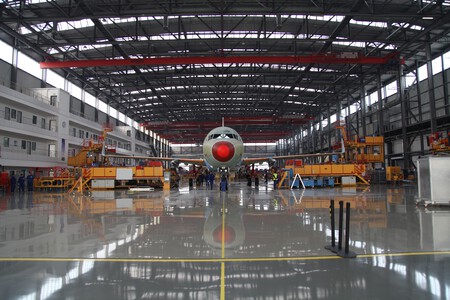Airbus closes a tremendous week. The European manufacturer received on monday the largest aircraft order in the history of the industry. 500 units that will have as destination IndiGo, the largest airline in India. This remarkable event was accompanied by another that did not go unnoticed either: Air India ordered 140 A320neo and 70 A321neo.
In Toulouse, the home of Airbus, they have plenty of reasons to celebrate. Sales of commercial aircraft continue to grow, which may translate into a prosperous scenario for the sector. Although there is a detail that must be taken into account, which is that all these planes that have just been ordered still have to be built.
The great challenge of meeting deliveries
You may think the above is a no-brainer, and it certainly is, but the rush of orders can tighten the strings even more that keep their production scheme running. It is that Airbus, like other companies, is still suffering from the effects of the “disruptions” that have arisen in the midst of the pandemic.
Bloomberg data can help us better understand this scenario. Airbus expected to deliver around 720 aircraft in 2022, but fell short of its expectations and delivered 676. This year’s target remains intact. And this is precisely where the challenges begin: in May it had met 34% of its objectives for 2023, which leaves the manufacturer in a complex situation for the coming months.
One of the protagonists of the basic problem in the tension in the supply chain. And it is not something that we say, but that It has been recognized by the director of operations of Airbus, Alberto Gutiérrez, at the Paris Air Show. Commercial aircraft use the same type of steel for some of their parts as that used by the defense industryand the Ukrainian War has negatively influenced delivery times.
To give you an idea, steel orders used to be eight months late, and now the wait is about 20 months. The problems, yes, not only have to do with steel, but with a large part of the supplier scheme. Airbus relies on some 13,000 external partners to build its aircraft and it’s no secret that getting everyone to respond in sync is a huge challenge.
Gutiérrez assures that, in relation to last year, fewer suppliers are in trouble. Although he warns that the effects of the crisis of the supply chain They haven’t disappeared yet, and some companies are still having trouble filling orders. For example, late seat deliveries affect the delivery rate of aircraft. “We’re starting to do better, but it’s not enough,” he acknowledges.
Another of the protagonists of this complex scenario has to do with the employment dynamics of the industry. The aircraft manufacturer used to hire temporary employees in times of high demand. The rehire success rate was 80%, according to Airbus CPO Jürgen Westermeier. This scenario has also changed since they can only rehire two out of ten employees.

To meet its objectives, Airbus must hire 13,000 employees in 2023. The truth is that at this time it has 7,000 jobs covered and he still has a long way to go to complete his roster goals. Many professionals migrated to other industries that were not so affected in the midst of the pandemic, which has made the current job market a “challenging” scenario.
Images: Airbus
In Xataka: The US has just solved a very expensive problem with its F-35 fighters. All it took was plastic and a 3D printer.
In Xataka: The airline industry wants to fit more passengers on their planes. With seats at two heights










